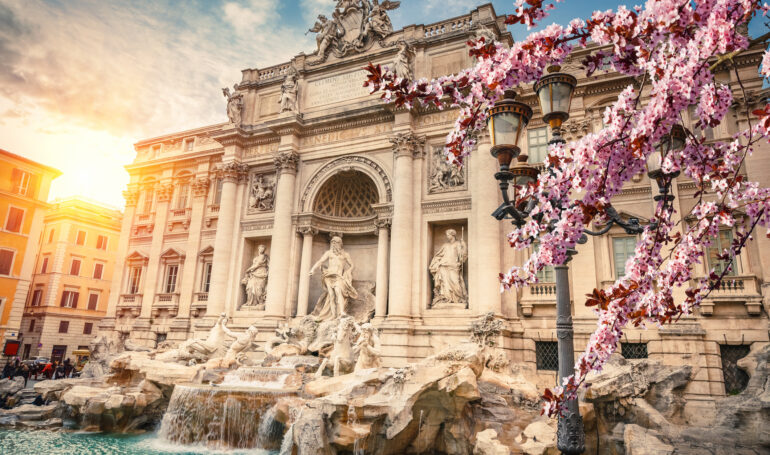
A Visitor’s Guide to the Eternal City
While our food and wine tours aren’t offered in Rome, I genuinely believe Rome is one of those cities that every traveler should see at least once in their lifetime. Rome is an easy flight from the U.S., as most U.S. flights land in Rome. This makes Rome that much more appealing to visit.
Some folks shy away from major cities for a more authentic experience. I get that and respect that point of view, but Rome is simply a city like no other. Is it touristy? Absolutely! But I hope travelers realize that some Italian cities are touristy because they are worth visiting! There is no shame in visiting cities such as Rome, Florence, and Venice, while ideally giving places like Calabria, Umbria, and Puglia also a chance.
If you are joining us on one of our culinary tours this year or next, consider stopping in Rome for a few days beforehand. Train travel in Italy is very reliable, so consider landing in Rome, spending a few days here, and then continuing on your next adventure by train. The ease and efficiency of train travel in Italy always surprises me because Italy isn’t known for efficiency!
So, with fountains and Roman ruins, baroque churches and columns, markets and alleys teeming with life, here’s what to see in the historic center of Rome. These are the obvious and most visited stops you should consider if this is your first visit to Rome. In a future post, I’ll list the least explored areas that only the Romans know about.
Colosseum
Originally known as the Flavian Amphitheater, the Colosseum in the heart of Rome is the largest arena in the world. Followed by the Amphitheater of Santa Maria Capua Vetere (Campania) and the El Jem Amphitheater in Tunisia. It once held up to fifty thousand spectators and was used for gladiator shows and other public events. Vespasian built it in the eastern area of the Roman Forum in 72 A.D., however, it was officially inaugurated in 80 A.D.
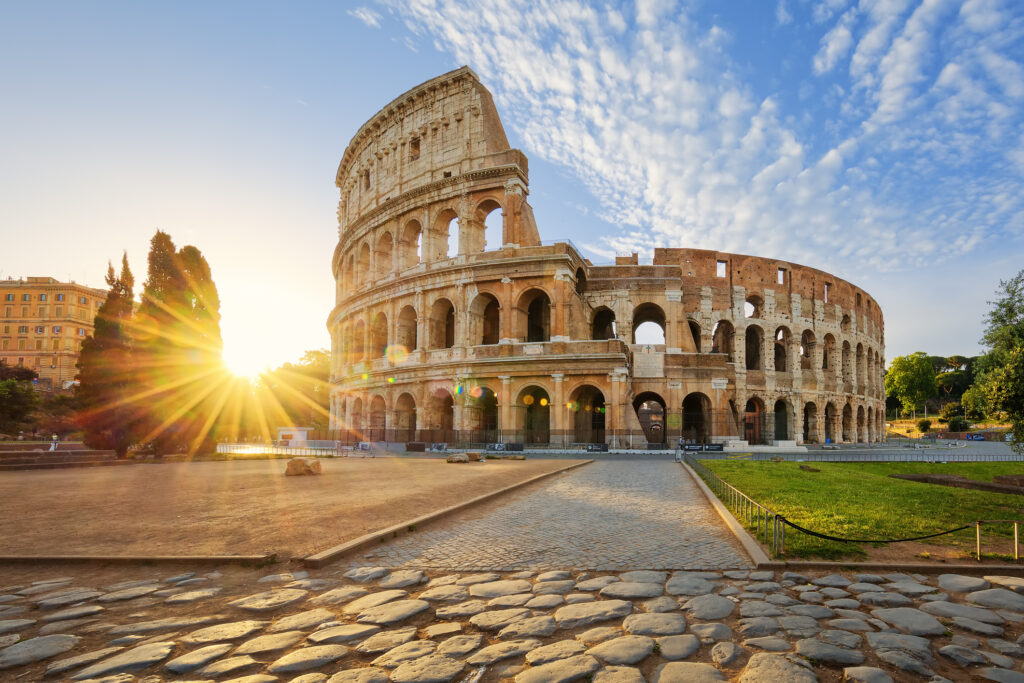
Roman Forum
Heart of ancient Rome’s political, commercial, and religious life, the Roman Forum is an extensive archaeological area that was expanded and built over 900 years with squares, temples, and buildings. It is one of the most photographed and visited monuments of Rome.
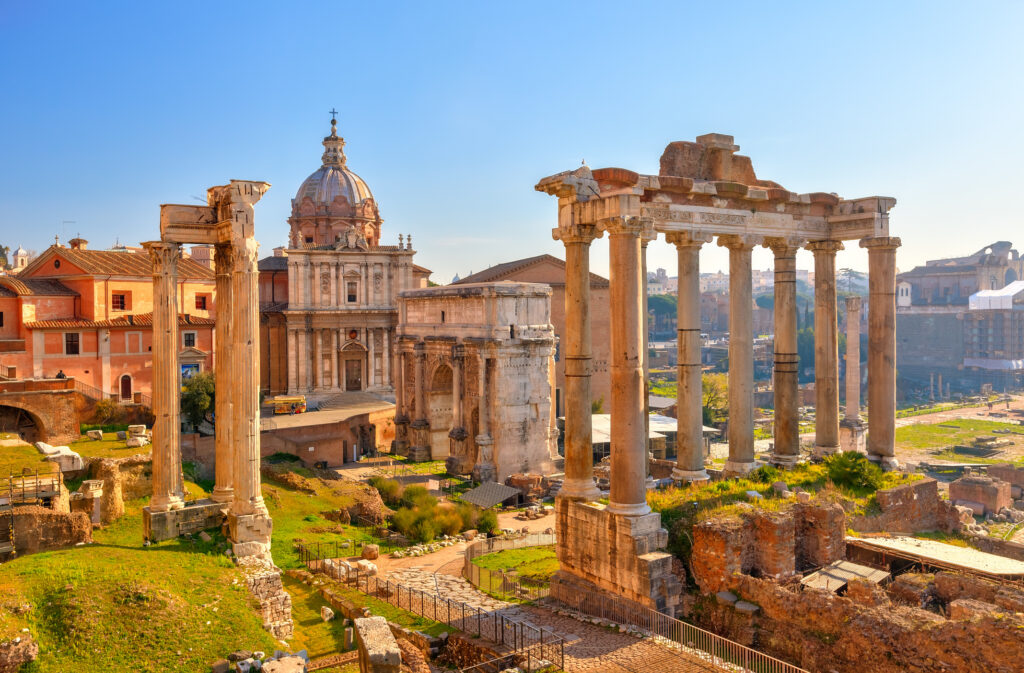
Pantheon
The Pantheon boasts one of the largest domes in the history of architecture, and is among the best-preserved buildings of classical Rome. It was built by Emperor Hadrian between 118 and 128 A.D. after several fires damaged the previous construction. The dome is 43 meters high and has an oculus in the center with a diameter of 9 meters that radiates natural light.
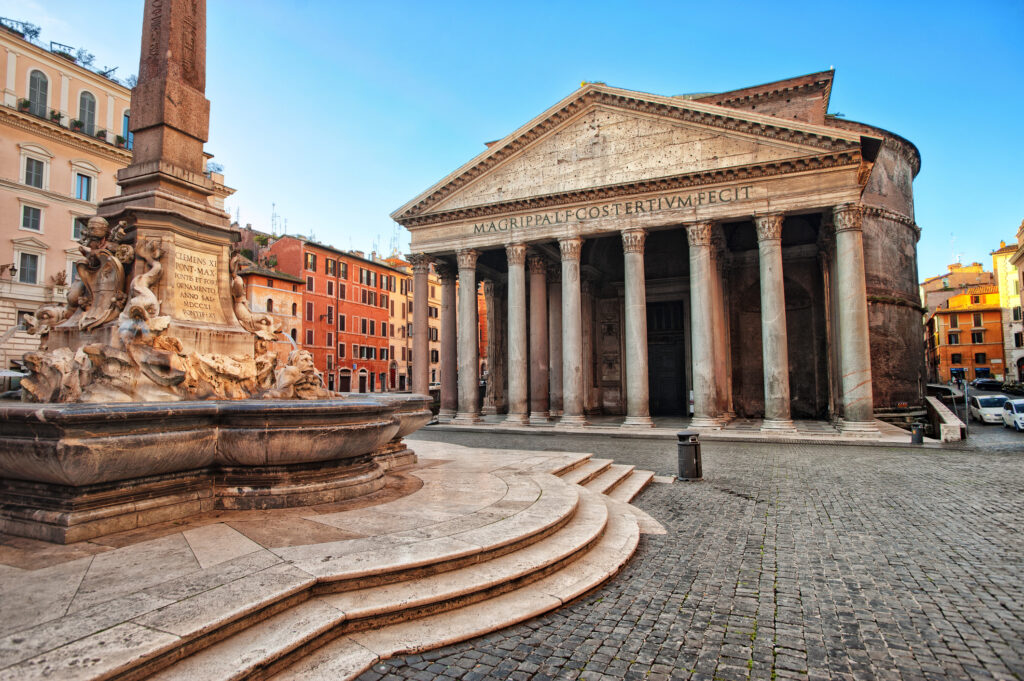
The Fountains of Piazza Navona
Piazza Navona is arguably one of the most famous piazzas in the city, if not in all of Italy. It is the pride of Baroque Rome. Three fountains adorn the square: the Fountain of the Four Rivers (Danube, Ganges, Nile, and Rio della Plata), a work by Bernini, the Fontana del Moro, sculpted by Giacomo della Porta and retouched by Bernini himself, and the Fountain of Neptune, the work of Gregorio Zappalà and Antonio della Bitta.
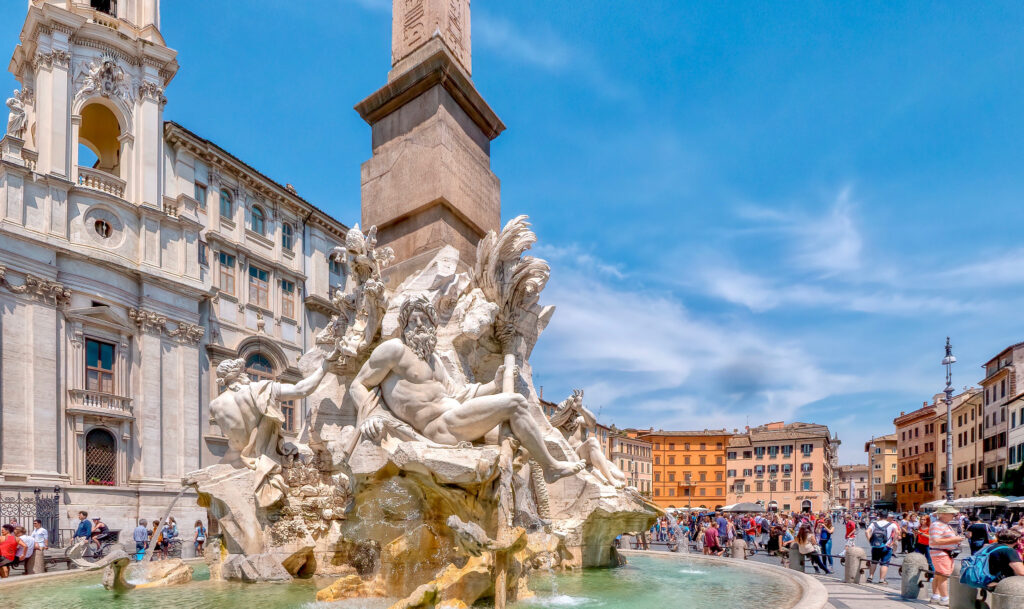
Saint Peter’s Basilica
St. Peter’s is the Catholic Basilica of Vatican City, crowning the monumental St. Peter’s Square. Many architects and artists who, over the years, between projects and creations, have succeeded in completing this marvel include Bramante, Raffaello, Michelangelo, and Gian Lorenzo Bernini. Surrounded by Bernini’s grandiose marble colonnade, it is considered the largest basilica in the world. The Basilica has a surface area of over 15 thousand square meters. You can admire masterpieces such as Michelangelo’s Pietà and Bernini’s bronze canopy, and the Vatican Crypt, which houses the tombs of numerous pontiffs, including that of John Paul II.
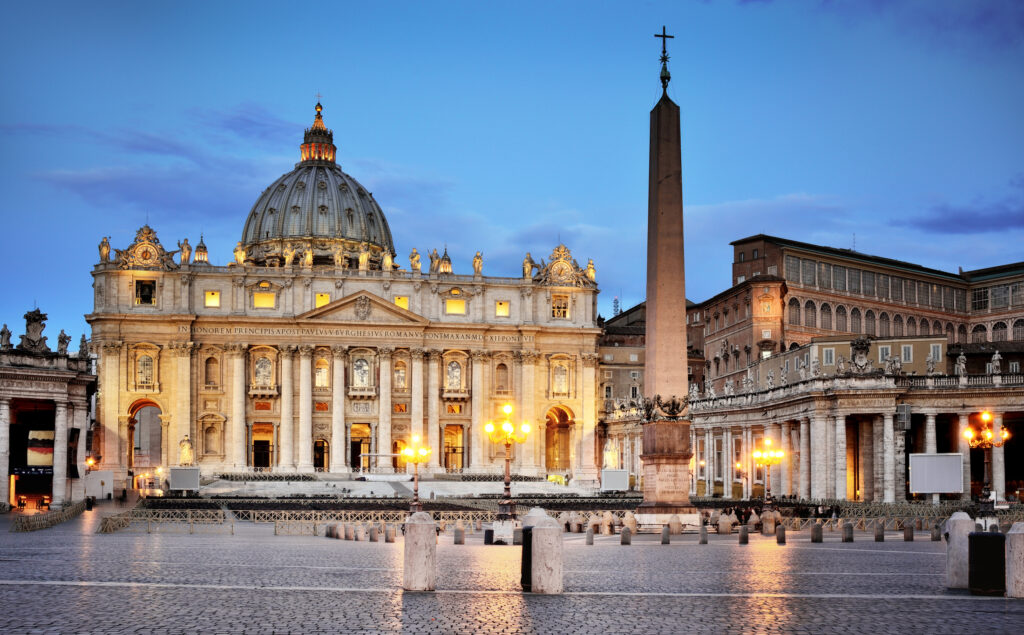
Vatican Museums
Inside Vatican City lies one of the world’s largest art collections, spanning seven kilometers of wonder. The Vatican Museums almost entirely occupy the Belvedere Courtyard and host an enormous number of statues, paintings, and art objects by the greatest artists, collected or commissioned by the popes over the centuries. At the end of the route, you will find the Sistine Chapel with the vault of Michelangelo’s Last Judgment.
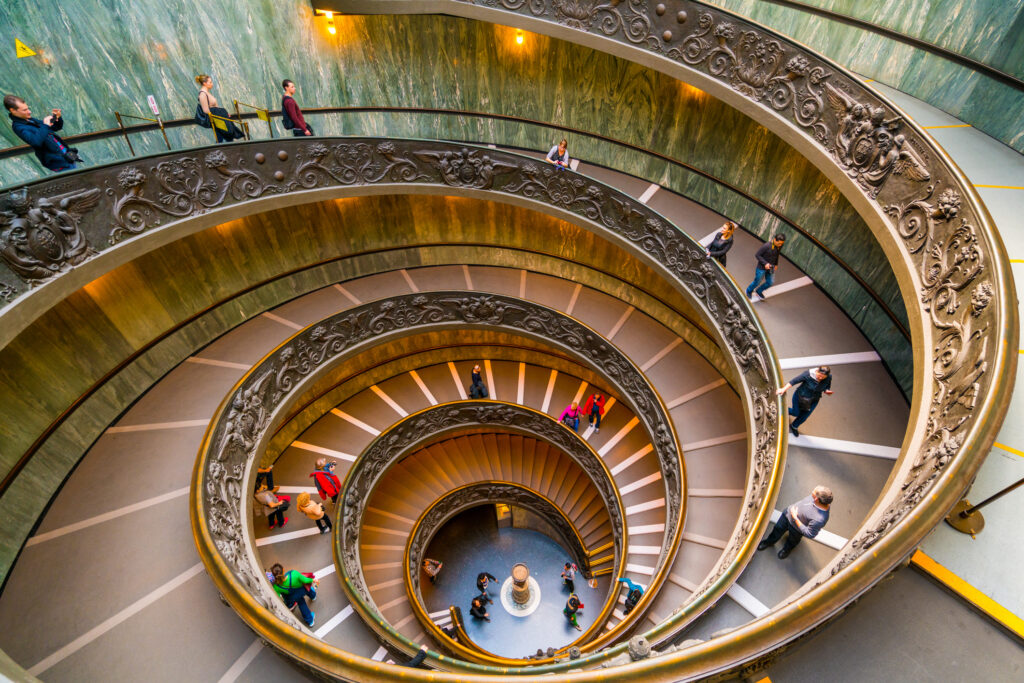
Photo credit: Holgs.
Sant’Angelo Castel
Built in 123 A.D. as a mausoleum for the emperor Hadrian, Castel Sant’Angelo was transformed into a fortress of the popes in the 6th century. Over the centuries, it became a prison, a Renaissance residence, and today, a museum. It owes its name to the vision of Pope Gregory the Great, who saw the Archangel Michael draw a sword on the circular fortress during a violent plague pandemic.
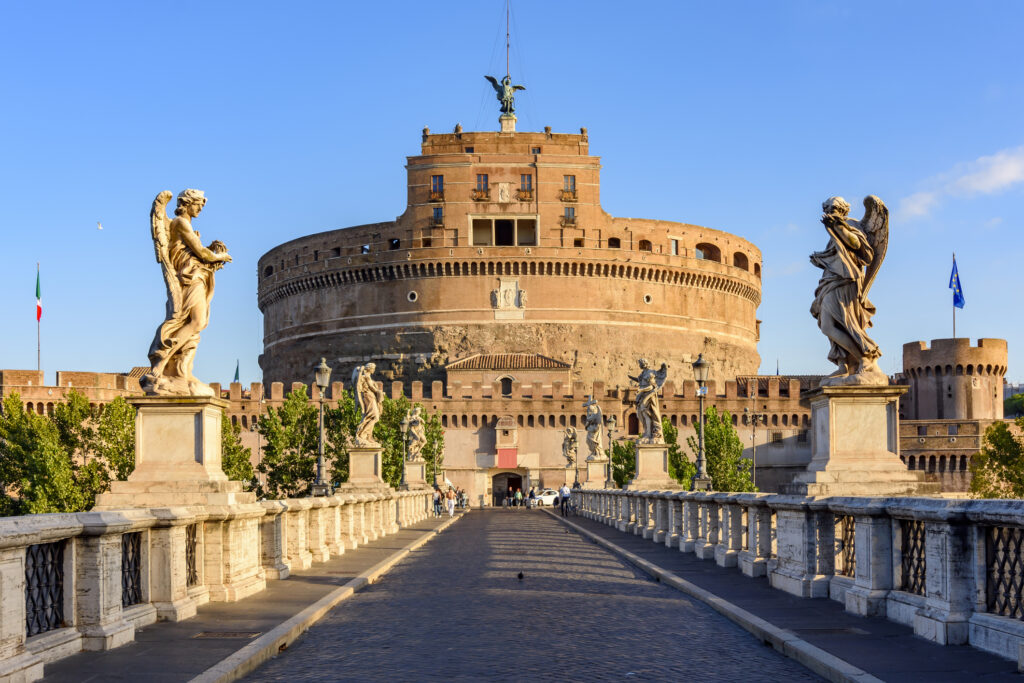
The Roma Catacombs
In the Rome’s underbelly, a visitor will find the catacombs – ancient Jewish and Christian cemetery areas extending for kilometers under the city. They are located outside the ancient city walls, as it was not possible to bury the deceased within the city. The Roman catacombs were often built along the consular roads, but there are also Jewish catacombs, such as those of Vigna Randanini and Villa Torlonia.
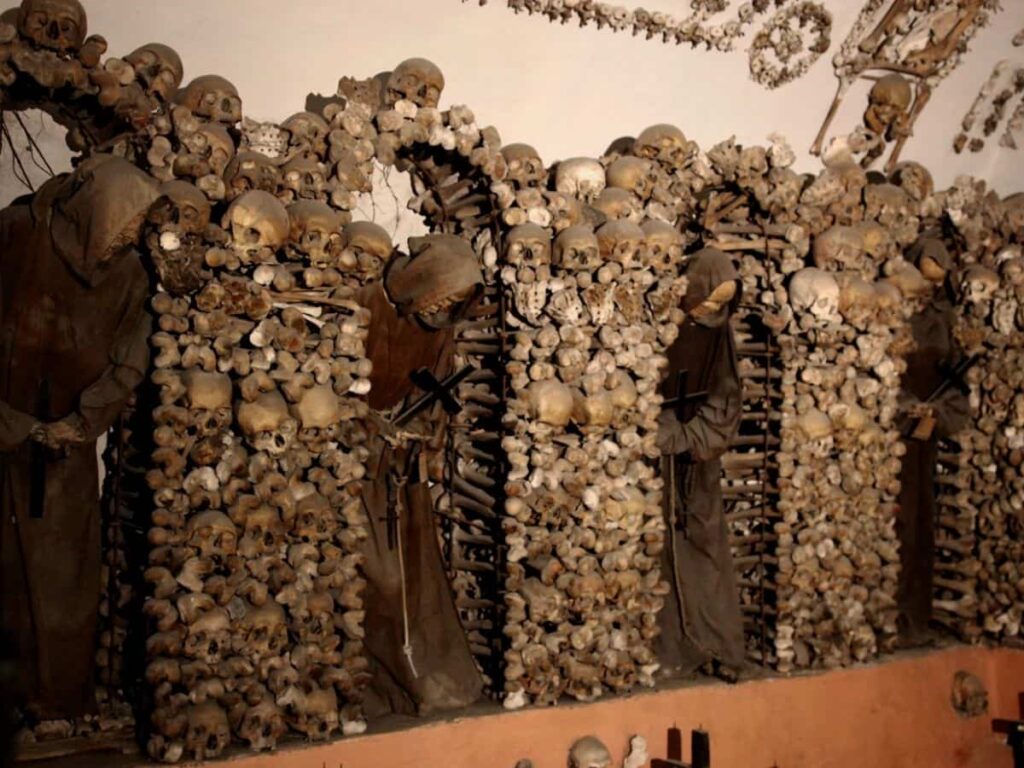
The Trevi Fountain
Trevi is the largest fountain in Rome, as well as one of the most famous in the world. Designed by Nicola Salvi and placed on one side of Palazzo Poli, the Trevi fountain is a blend of classicism and baroque. Over 1.5 million Euros are collected in coins from the fountain each year and donated to various charities.
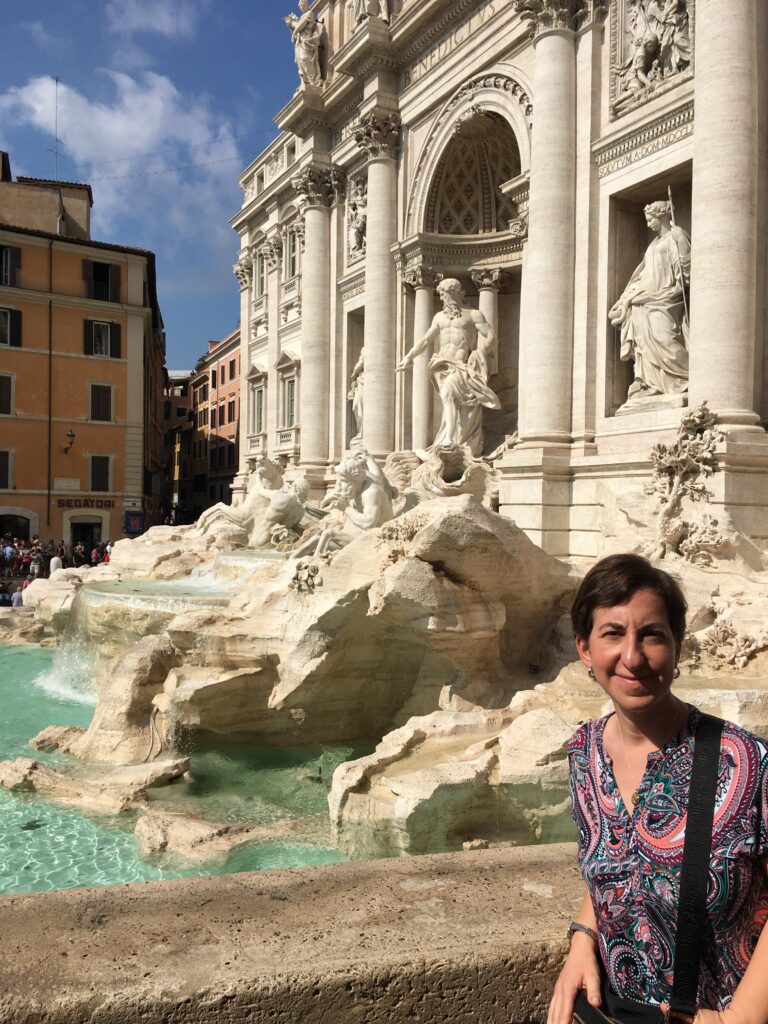
Trinità dei Monti Scalinata (The Spanish Steps)
The Trinità dei Monti staircase is one of the most famous squares in Rome. It owes its name to the Palace of Spain, hence the nickname of the Spanish Steps. In the center of the square, better known as Piazza di Spagna, is the famous Barcaccia Fountain, which dates back to the early Baroque period. It was sculpted by Pietro Bernini and his son, the more famous Gian Lorenzo Bernini.
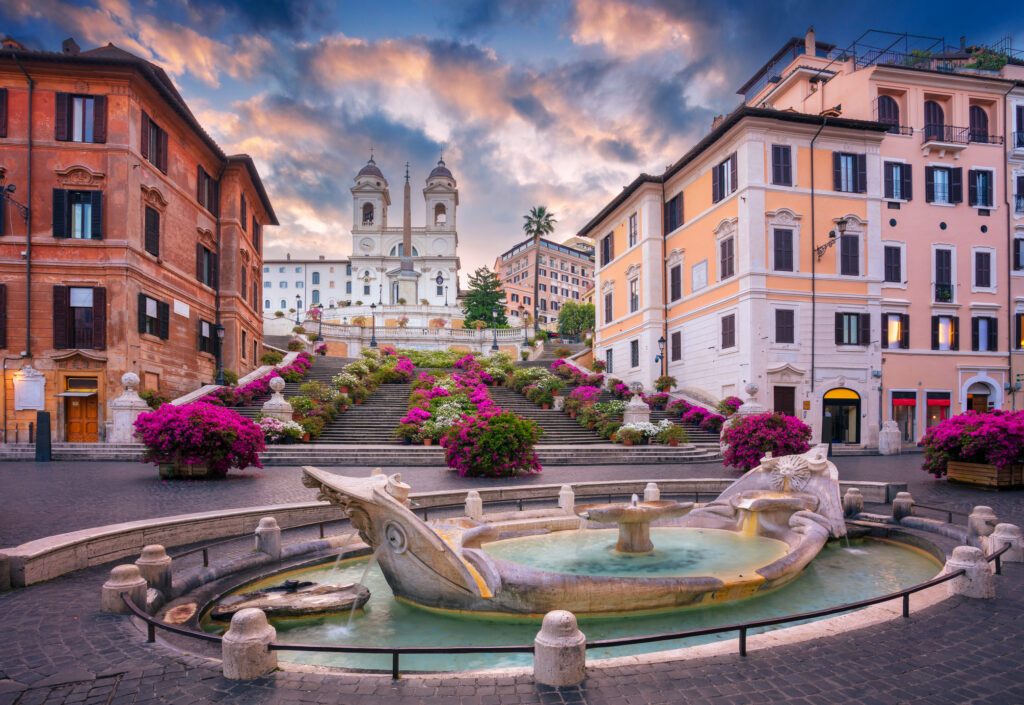
Shopping
While Milan gets most of the attention, Rome is also the shopping capital of Italy. In addition to the most exclusive streets of the city, where the boutiques of the most important Italian and international brands are found, such as Via del Corso, Via dei Condotti, Via del Babuino, and Via di Ripetta, there are several shopping centers such as Porta di Roma, Roma Est and Euroma 2. Let’s not forget the open-air markets such as Campo de Fiori, Porta Portese, and Ponte Milvio. It is here that you’ll find more unique gifts and souvenirs.
Eating in Rome
After a day spent wandering in the Eternal City, there is nothing better than savoring a typical Roman dish. The cornerstones of Roman cuisine are pasta dishes. The most famous are bucatini all’Amatriciana, made with lard, pork cheek, tomato, chili pepper, and pecorino, and pasta all carbonara, made with pork cheek, pecorino, and eggs. But the pasta can also be in broth or prepared with vegetables and legumes.
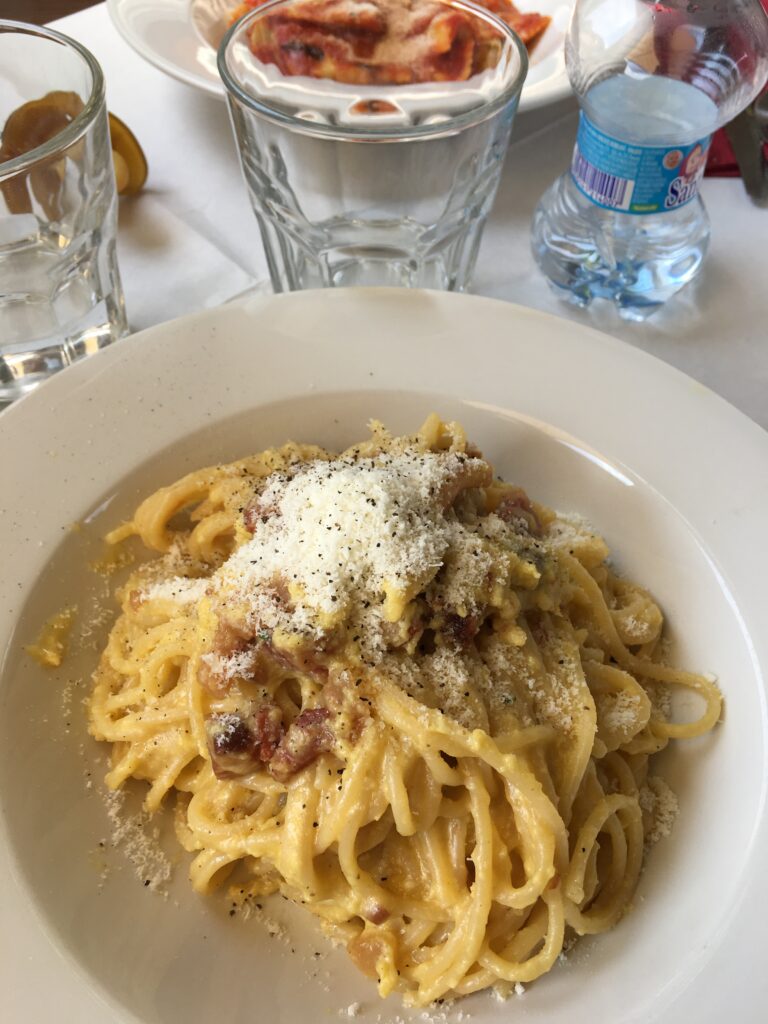
Arriving in Rome by Plane
The city is served by two airports, but if you are arriving from the U.S., you will certainly land in the most important one, the Leonardo da Vinci International Airport, better known simply as Fiumicino from the name of the municipality that hosts it. It is about 30 miles away from the city center.
The second is the Giovanni Battista Pastine International Airport, located in Ciampino, along the Via Appia. In all my 35 years of traveling to Italy, I have never had to use this airport.
Arriving in Rome by Train
Rome is the main railway hub in central Italy. In addition to the Roma Termini station, the busiest in Italy, there are also the Roma Tiburtina stations, where high-speed trains are scheduled to stop, Rome Ostiense, Rome Trastevere, and Rome Tuscolana.
One Final Word
I keep it as real as possible when it comes to Italian travel. While violent crime in Italy is very low, pickpockets are an epidemic. Especially in train stations or busy city streets such as in Rome and Venice. And they have no shame! They will look like everyday folks, some even wearing a collar to appear like a priest, especially in Rome! As such, I ask everyone to be very vigilant about their belongings. Ladies should always keep their hands on their pocketbooks. Men should never keep their belongings in their back or even their front pockets, but rather invest in a crossbody travel pouch.
Leave a Reply

What to Pack for Italy
Cosa Mettere in Valigia per l'Italia
Everyone is always asking me what they should pack for Italy,
so I’ve created a quick reference guide that you can use for your next trip.
Hint: You don’t need nearly as much as you think you do!

One Comment
Such a pertinent article, as we plan to visit Rome before our train ride to Almalfi! We have a good friend in Rome, he is a fellow leather worker, we actually met in Las Vegas at a trade show. Iam looking into a small hotel near the bassillica, his leather shop is near by. Any suggestions would be so appreciated. A bit concerned about the Jubilee crowds, but we’ll just start our day before the throngs! I will reach out to the travel agent you suggested for our air, train and transfer needs. Really love your Sunday blogs!